- Allows you to have one wide desktop spread over 2 displays
• Draw left eye view on one display, and the right eye view on the other display
• Filters in front of projectors polarize the light that reaches the screen
•
Viewers wear lightweight glasses with filters so the right eye sees
only the right-eye image and the left eye sees only the left-eye image
PC graphics card with 2 outputs
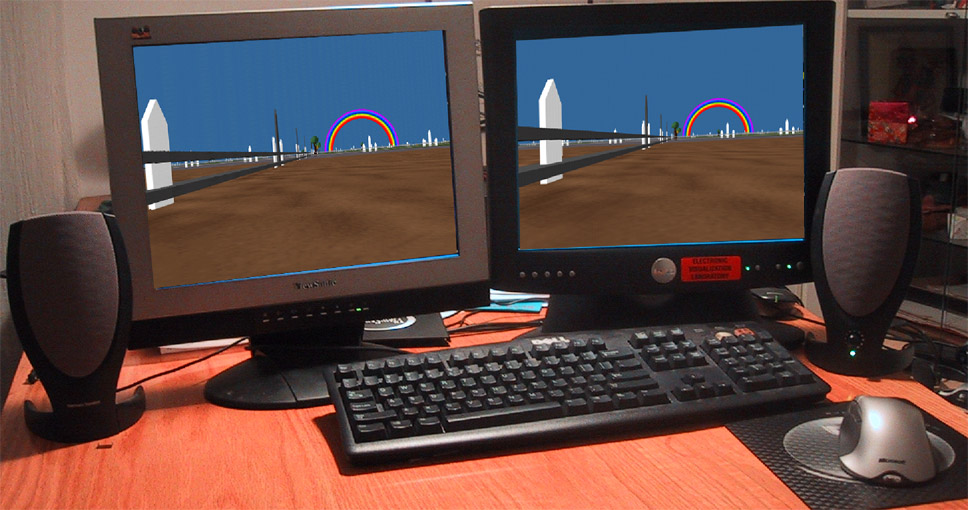
Temporary
GeoWall
setup at the Museum of Science and Industry
The
Adler Planetarium has two
permanent GeoWall setups - one on the exhibits floor and another in the
Space Visualization Laboratory along with a tiled display
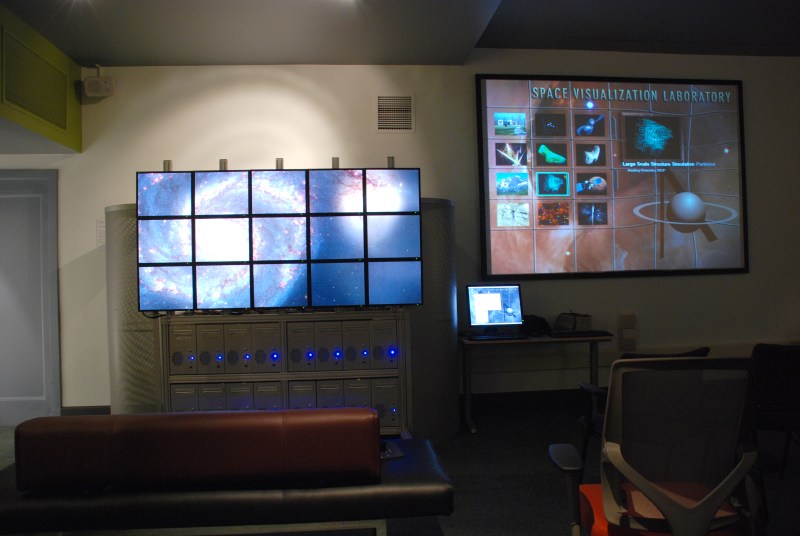
Temporary GeoWall setup at Abraham Lincoln Elementary School
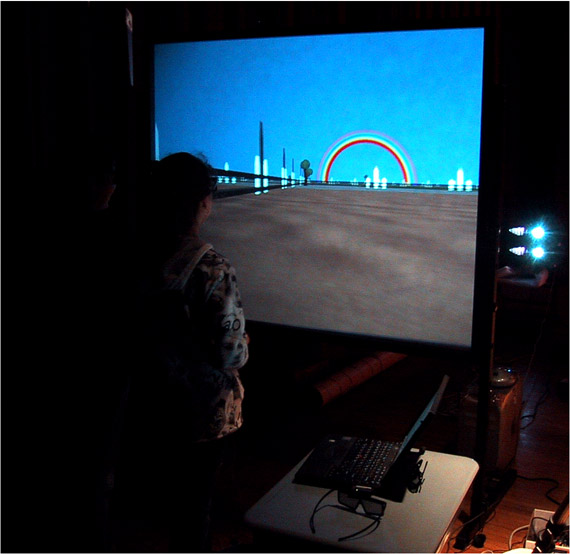
But
that's not all ... there is typically enough room in even the shuttle
PCs for more graphics cards to drive a small tile display as well as a
passive stereo display so people can view 3D data and high resolution
2D data simultaneously from the same computer.
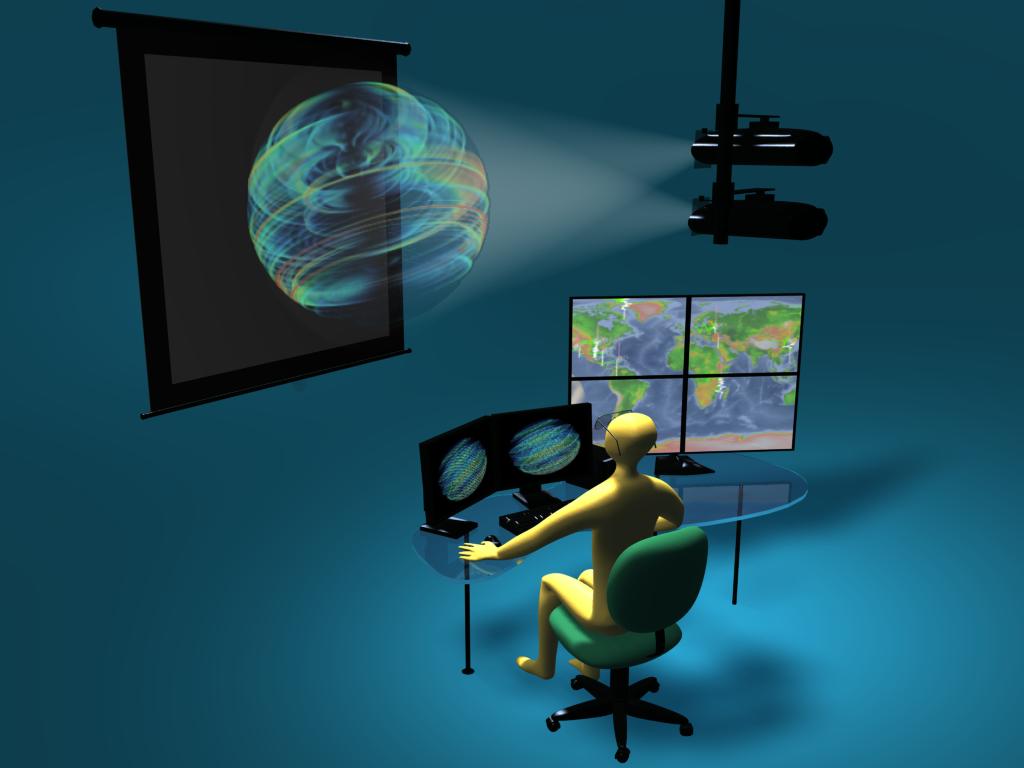
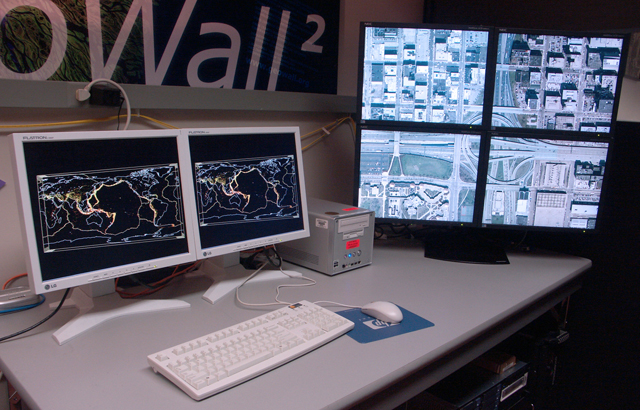
more
information on GeoWall hardware / software / setup can be found at
www.geowall.org
The
GeoWall has a fairly large footprint and limited resolution at 1024x768
or 1280x1024 typically for each projector. This works well for a
classroom, but less well for single investigator with
high-resolution 3D data. One solution to these problems is a smaller
version of the PARIS calld the ImmersaDesk 4. The ImmersaDesk4
currently makes use of two 2560x1600 30" monitors, a half-silvered
mirror, and passive stereo driven by a single PC. An optional tracking
system allows for head/hand tracking.
These
photos show an ImmersaDesk4 built at the Naval Research Lab to look at
stereo photographs of the sun (and compare them to simulated modes.)
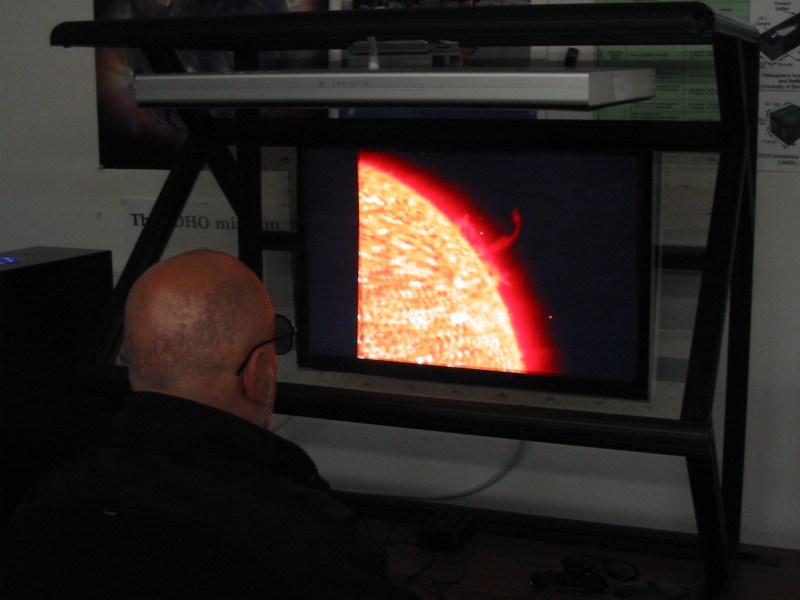
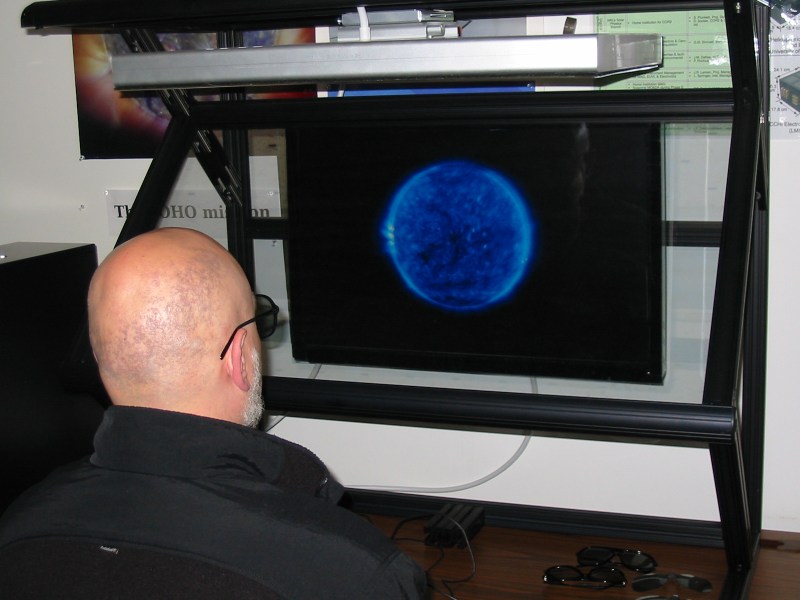
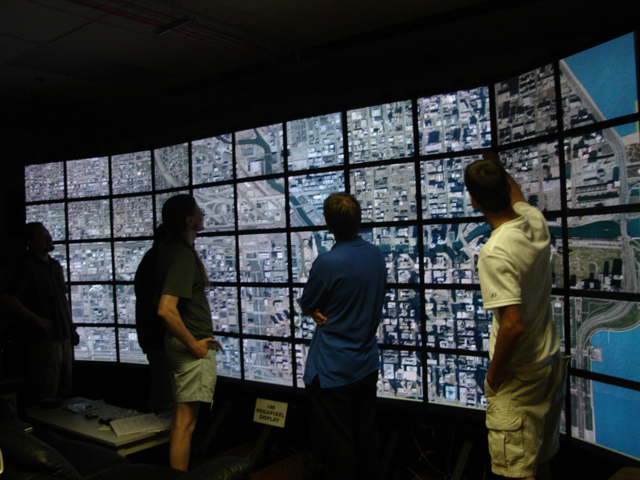
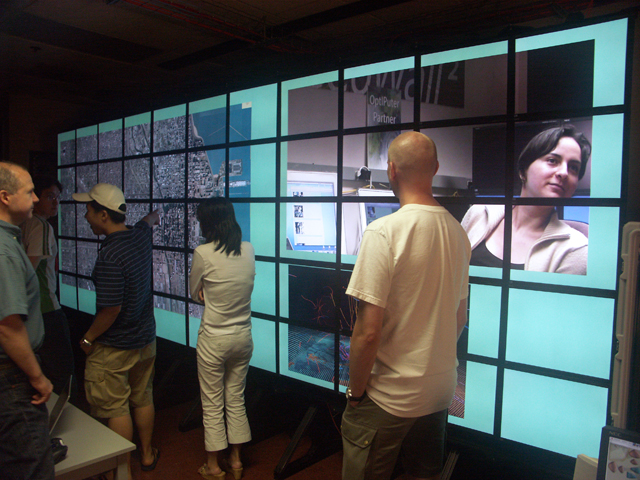
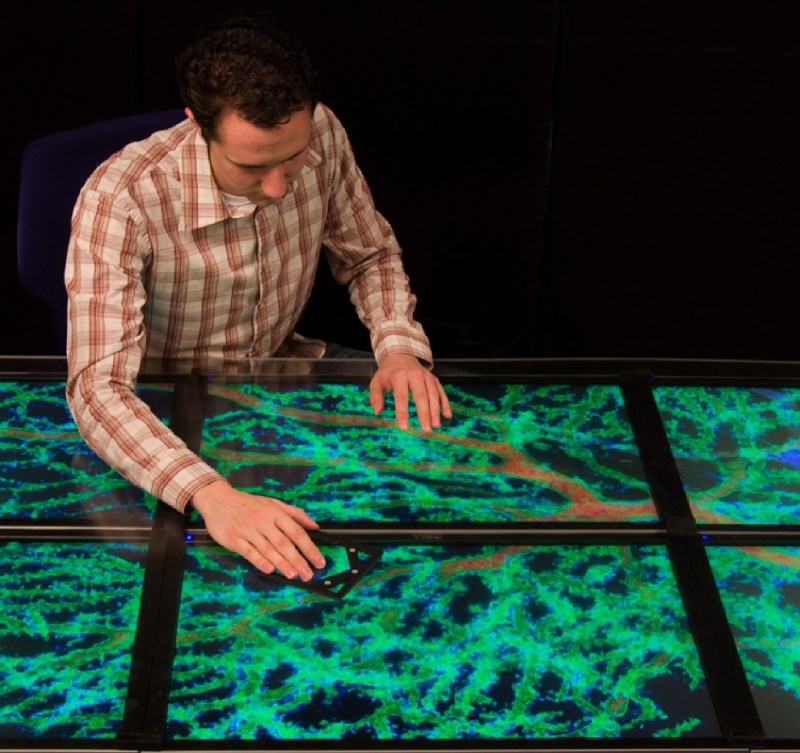
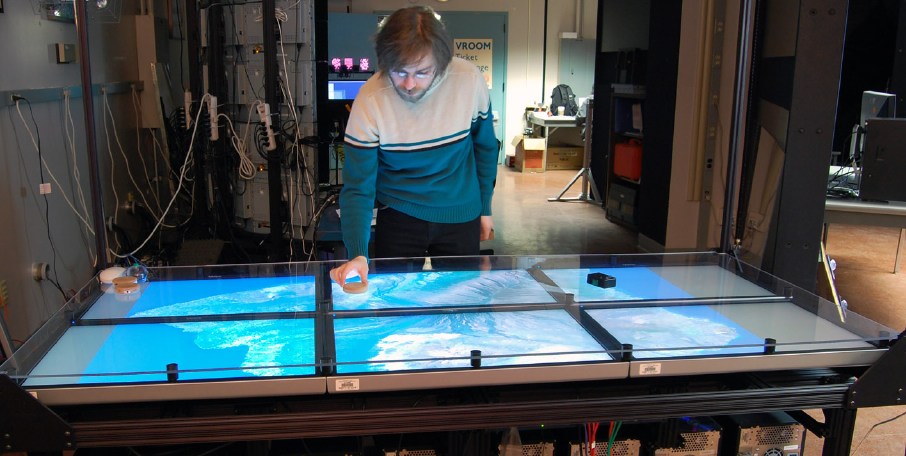
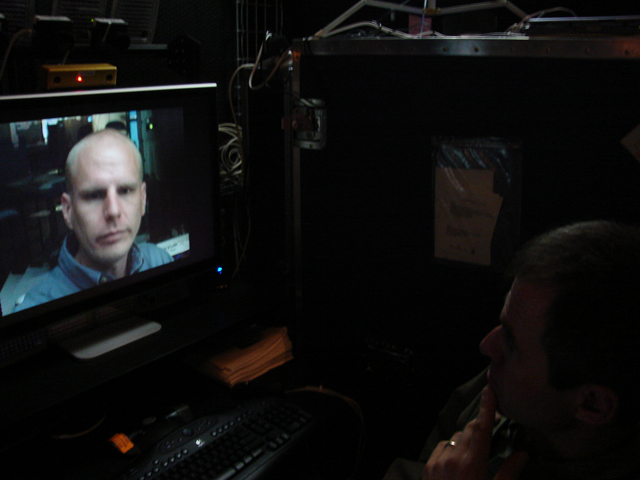
All of these devices are designed to take advantage of fibre optic networks through the OptIPuter research. These networks allow you to create dedicated 10 gigabit links between computational resources and visualization resources.
These kinds of links allow us to separate the data used for visualization, the visualization generators, and the display into three separate sites linked by high-speed high-bandwidth networks.
These kinds of resources are needed because there is so much data to visualize in certain diciplines.
The US Geological survey has 51 terabytes of aerial photographs of 133 urban areas in the US at 1/3 of a meter resolution per pixel. This generates maps at resolutions such as 365,000 by 365,000 pixels.
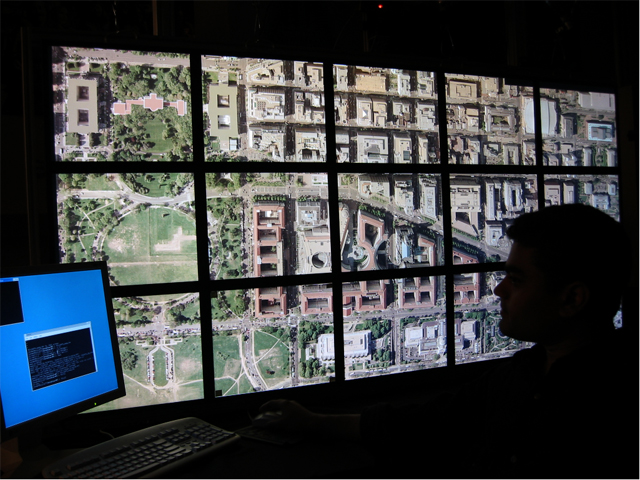
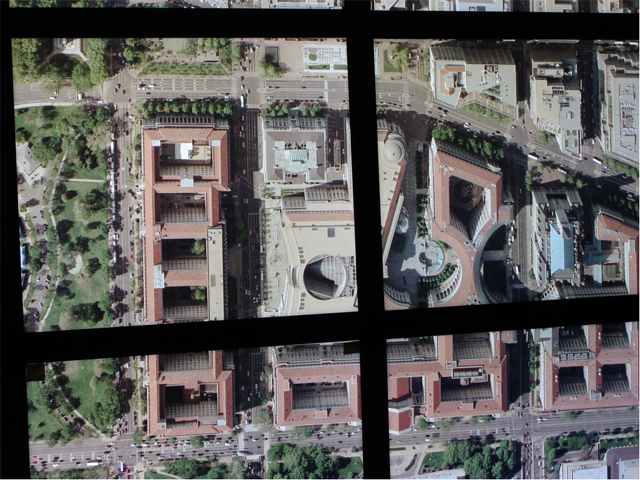
NCMIR studies rat brains with microscopes generating images of 4000 by 4000 pixels that are then put together to generate montages of 43,200 images.
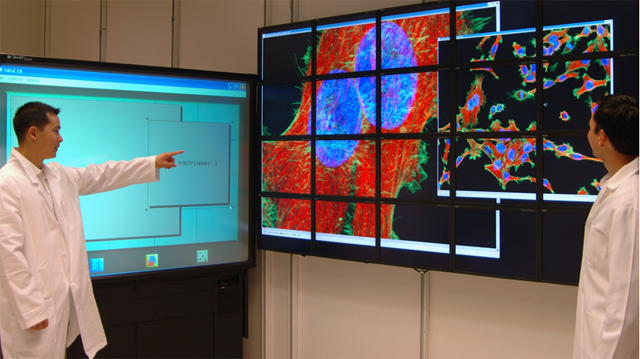
Or even larger montages of a rat kidney
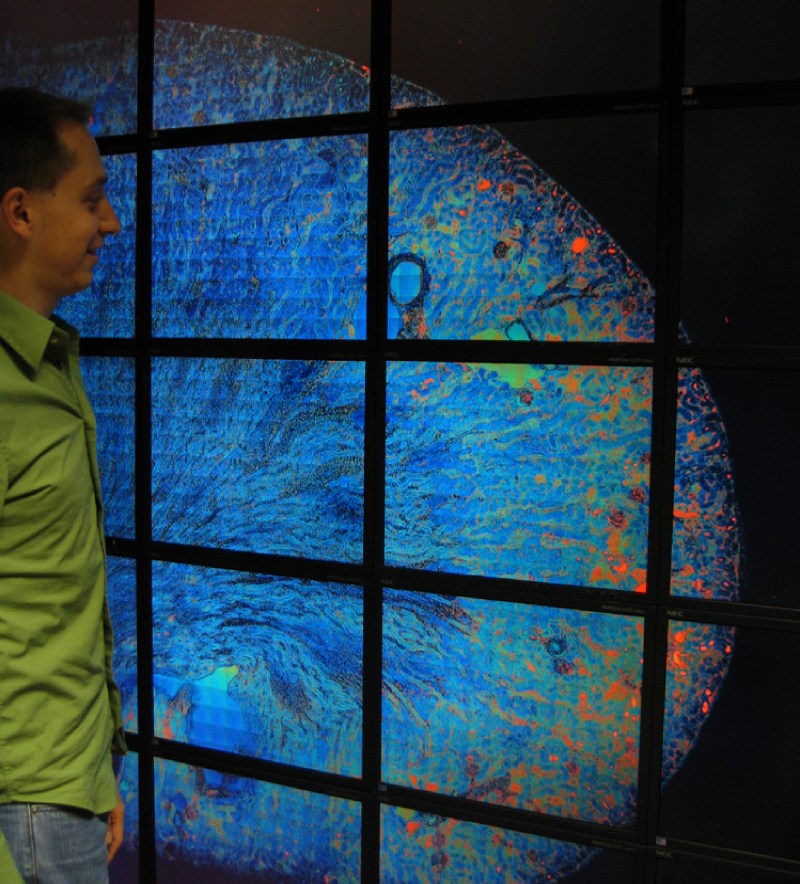
Core
Labs take core samples from ice, lakes, and the bottom of oceans ending
up with over 300 km of core samples, that are being scanned at 100 dpi.
This technology was used in Antarctica as part of the ANDRILL Project
in 2006 and 2007.
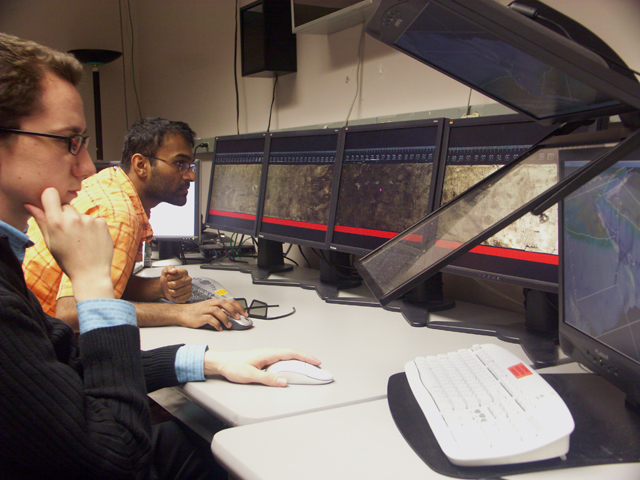
We are prototyping a similar setup for use at the Adler Planetarium for patrons to view the panoramic images from the recent Mars missions
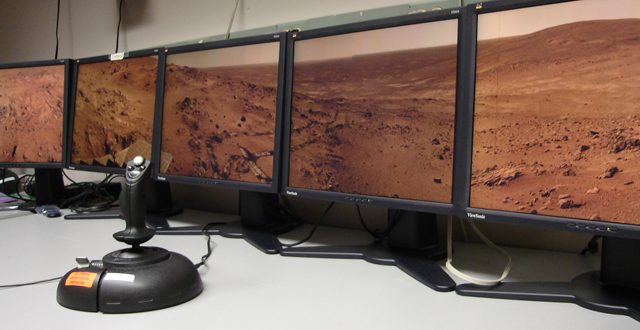
Large high resolution diplays allow researchers in these disciplines to see both detail and context at the same time. The high-speed high-bandwidth networks allow the data or visualizations of the data to be moved from storage locations to display locations quickly.
Project
2 Presentations